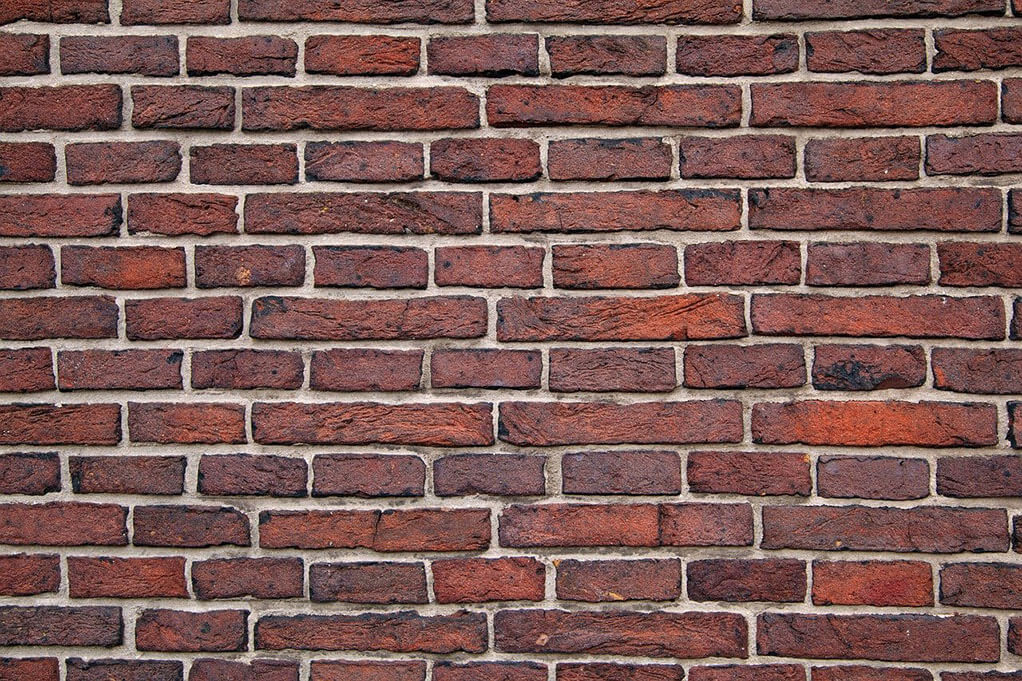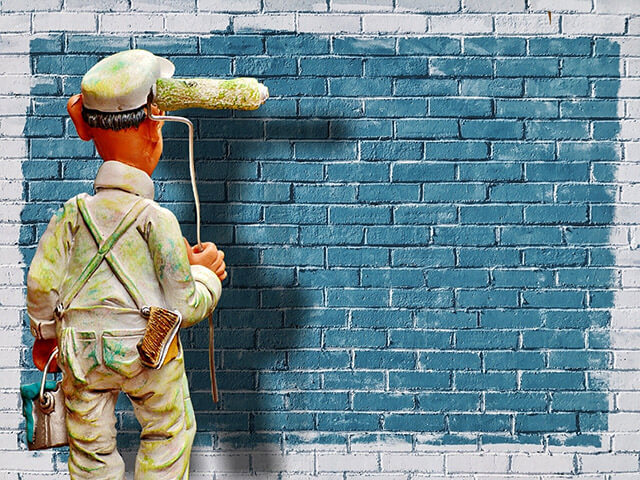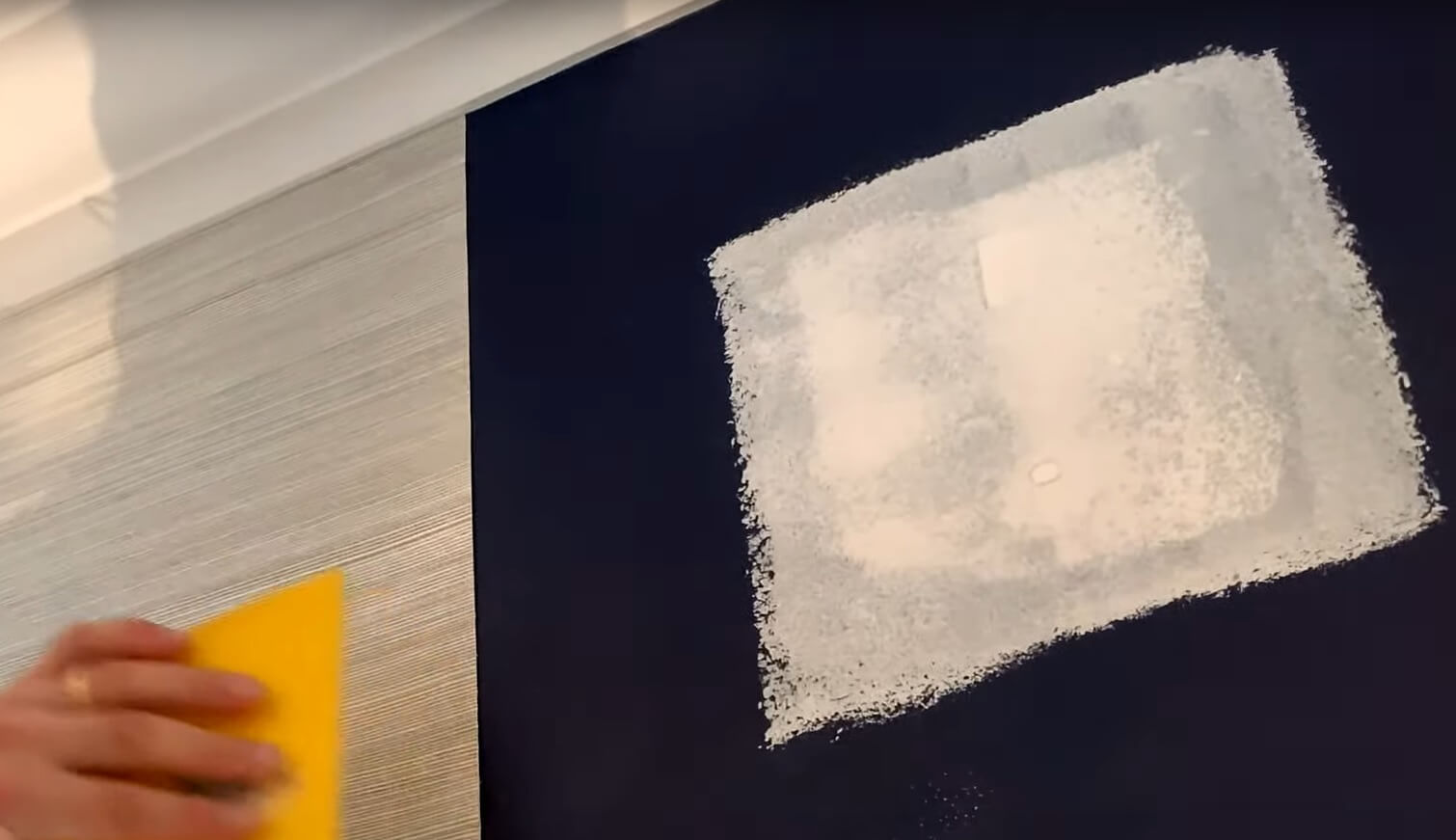Can You Paint Over Wallpaper – How to do it Right
Yes, you can paint over wallpaper.
You are tired and sick of your old wallpaper. And you know removing existing wallpaper can be a big chore.
Several questions come to your mind.
- Can you paint over wallpaper?
- How to do it right?
- What paint should you use?
- Do you need to remove wallpaper?
- Do you need to prepare the walls?
- Can you use any color for painting over wallpaper?
- Is it going to be cost-effective?
- How many coats of paint do you need?
- Do you need to use oil-based paint only?
Table of Contents
Can you paint over wallpaper?

Brick Wall or Wallpaper
Good news! You can! You can paint over your wallpaper. It is a great way to give your room an updated look. You will need some supplies, but if done correctly, your project should last longer than traditional wallpaper replacement.
Painting wallpaper is a better option when:
- You don’t want the hassle of removing the wallpaper. And peeling off may damage the wall.
- The old wallpaper is peeling and coming off in places.
- Some areas are stained or damaged beyond repair from water damage, etc.
- You want to get a new look quickly
- You are on a budget.
- There may be multiple layers of wallpaper and removing them may be very difficult.
How to do it right?
Clean the walls – Prepare the space (prep work).
You need to clean the wall coverings thoroughly. Replace damaged sections where required. If there is any dust, stains, or grease left on your wall, it will interfere with how long the paint lasts and look.
Tools you will need to clean the wall:
- Goggles
- A scrub brush for cleaning stubborn stains
- A bucket
- Putty knife
- Painters tape
- Soft cloth – use a damp cloth to clean the entire surface
- Rubber gloves
- A sponge
- Washing detergent – Use a big sponge to clean the wall with some washing detergent and water. Wipe off dirt or soiling on the wallpaper.
- TSP (trisodium phosphate) – If the walls are greasy and grimy, clean them with diluted TSP. Mix one-half cup of TSP for every 2 gallons of warm water in a bucket. You can follow the manufacturer’s recommendation.
- Sandpaper (150- to 180-grit) – to sand down any paint that is coming off from previous layers. Sanding the walls will make a smooth surface, clear the rough spots, and help with the adhesion of new coats. Also, sanding removes dirt and grit stuck in old layers of paint on your wall. Sanding can be a time-consuming job.
Repair any damages or nail holes. Smooth out the edges. Peel off any loose pieces.
Repair the wall
Now that your walls are clean, repair the wall.
If you have any damages or holes on your wall, it is best to fix them before painting over wallpaper.
You will need to use a putty knife and spread spackle on any holes or cracks in the wall (wallpaper glue is very hardy). Allow it to dry completely before moving forward with this process.
Make sure the wallpaper is tightly attached to the wall. If you have wallpaper that is peeling, remove it.
You can use a putty knife to peel off the paper by applying pressure under the edge of the paper with the blade and lifting up gently at first; then more firmly as loosened panels come away from the wall.
Tape off any trim and molding – Use painter’s tape to protect the trim and molding from getting paint on it.
Painting wallpaper – the paint job

Painting a wall
Tools you will need to start painting:
- Oil-based or shellac-based primer
- Mineral Spirit
- High-quality paint brushes
- A paint roller or paint sprayer
- Topcoat paint of your choice
Tips – Never use water-based primers.
Prime the walls and let them dry
You should use an Oil-based or shellac-based primer to prepare your walls for painting over wallpaper. Latex-based primers do not adhere well to the surface. The purpose of using this is that it will help the new coat stick better and last longer than other primers or paints alone would do on their own.
Use a bristle brush or paint roller to apply the primer on the walls.
Give the walls plenty of time to dry.
Since you are going to apply paint with a brush, roller, or even a paint sprayer, make sure that has been done correctly so there aren’t bubbles or areas where the paint did not stick well.
Do not use water-based primer as it will soak the wallpaper and will make your paint peels off easily after some time.
Start Painting
After all that cleaning and priming, you are now ready to start painting the wallpaper.
Choose a paint color.
Use your paintbrush to cut in the corners and rollers to cover larger areas.
You can apply paint directly from the can or pan. Make sure enough coats are applied so there is no more of the original wall showing through.
For large flat surfaces, you can use a paint sprayer to paint the entire wall if desired. Ensure that the area is well ventilated and protective gear should be worn when using one.
For most light-colored wallpaper one coat of paint will suffice. But you may need a second coat if the wallpaper is dark colored or heavy textured wallpaper.
Allow time for drying of each coat before applying the next layer of paint/primer onto the wall after preparation has been done prior to the painting process.
You may consider sanding the wall before applying the second coat.
When Not to Paint Over Wallpaper
There are circumstances when painting over a wallpaper may not be the right solution.
There are different types of wallpaper. One of the most common examples is when you are dealing with high-quality or delicate wallpaper. This type of paper costs more, but it often has a finish that makes it impervious to water damage and paint adhesion. That means if you paint over this material without removing first, your walls will be ruined in no time.
Can I Paint Over Old Vinyl Wall Paper?
No! Don’t try to paint vinyl wallpaper as this does not stick properly.
Why it can be a good idea?
- Painting over wallpaper will save you time and money.
- It will save time removing the wallpaper.
- Prevent damage to the wall when removing.
- May need to buy tools for removing, which will cost you.
- You will get a brand-new look in a shorter time.
- You can also change the finish and color of your walls as well as the texture.
Bottom Line
The decision to make is whether you can paint over wallpaper.
If it is a delicate or high-quality paper that has little to no chance of adhering to paint, then you need to remove the wallpaper first.
Otherwise, just use an oil-based primer and start painting!


